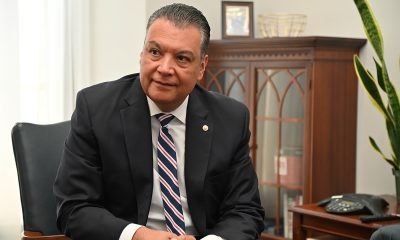Books
Two new books from longtime LGBTQ advocates not to miss
Besen on fight against conversion therapy; Basile revisits founding of HRC
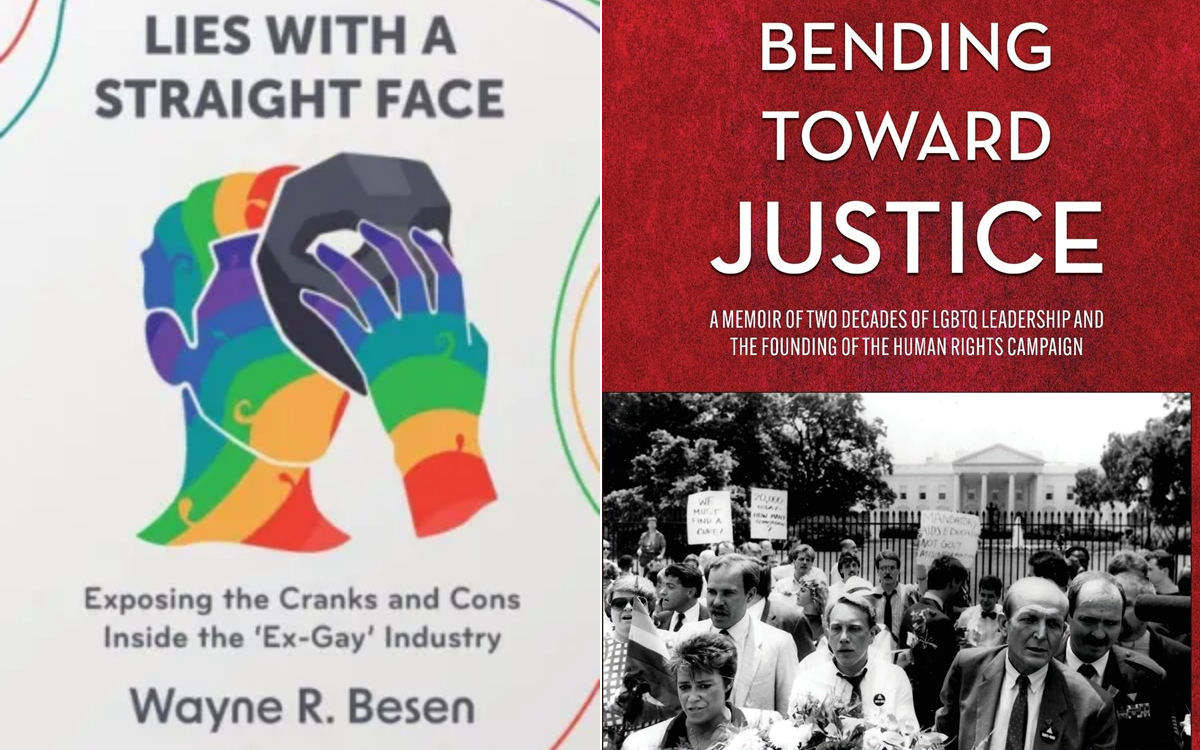
This fall brings two new important books from leading LGBTQ advocates, Wayne Besen, the leading figure in the fight against so-called ‘ex-gay’ therapy; and Vic Basile, a longtime LGBTQ rights and Democratic Party activist.
“Lies with a Straight Face: Exposing the Cranks and Cons Inside the ‘Ex-Gay’ Industry,” by Besen revisits the fight against conversion therapy.
“I wrote this book to ensure that future generations know the truth about how conversion practices damage mental health, break apart families, and never work,” Besen said in a statement. All royalties from book sales will go to Truth Wins Out, to help its efforts to fight the “ex-gay” industry. Book release date is National Coming Out Day, Oct. 11. Visit waynebesen.com for more information and for a link to pre-order.
Below is an excerpt from the book:
Weird Weekend: Journey into Manhood
Twenty-four-year-old Matt Ashcroft traveled from a small town in Ontario, Canada to the woods of New Hope, Pennsylvania to attend Journey into Manhood’s (JiM) weekend retreat. It was a 48-hour “ex-gay” camp experience, that was supposed to put him on the path to heterosexuality.
Not long after he provided his John Hancock for a non-sexual experience, Matt heard the words he’ll never forget. “Don’t mind me if I have a boner,” a 50-year old man who Matt says “smelled like cat pee” intoned. The older gentleman was assigned to be Matt’s cuddle partner. The idea was to serve as a surrogate father, offering love and affection through touch that dad supposedly withheld.
When the weekend commenced, lights were dimmed in a large room, creating an atmosphere of mystery and foreboding. The campers were disoriented, with their personal items having been taken from them immediately upon arrival.
“We didn’t even have watches,” Matt explained. “We didn’t have cell phones. We had to rely on the sun to tell time. We had no sense of time. We just followed direction from the leaders that were there.”
Most of those who signed up came from stern religious communities where they had very limited access to out gay men. Far away from home, they suddenly found themselves in the forest, surrounded by similar guys with raging hormones. The pent up, closeted sexual energy, whether acted upon or not, was palpable, and lay beneath the surface.
Matt nervously peered at his malodorous cuddle partner. They were instructed to attempt the “motorcycle position”. The much older stranger would sit behind Matt and hold him, as if they were riding a Harley down the highway.
Awkwardly, the guys crouched into position. Matt squirmed and tried not to breathe, though his partner’s stale cat urine aroma gently wafted into his traumatized nostril. He could feel the mature stranger’s member inflating like a birthday balloon, poking and prodding into his backside.
What kind of “straight camp” was this? Matt thought.
Abba Dabba Doo
Arthur Abba Goldberg was out of prison and out of luck. The disbarred attorney and former Wall Street conman groped to discover the next chapter in his sordid life. He was forbidden from practicing law and banished from the financial industry, so it was unclear how he would make a living. Suddenly, like a revelation from God, it was all too obvious.
His son had come out as gay, so Goldberg would opportunistically capitalize on his family’s situation to cash in. He recruited Elaine Berk, who also had a gay son, to pose together as “experts” who could cure homosexuality. In 1999, they started Jews Offering New Alternatives to Homosexuality (JONAH), in Jersey City, as the vehicle for their scam.
To add a whiff of legitimacy, Goldberg authored, Light in the Closet: Torah, Homosexuality, and the Power to Change, which mostly cribbed NARTH’s fringe ideas and debunked theories. Additionally, Goldberg became the Executive Secretary of NARTH and President of Positive Alternatives to Homosexuality (PATH), a coalition of “ex-gay” groups promoting “non-gay alternatives to homosexual lifestyles.”
In terms of viability, there was pent up demand in the Orthodox Jewish Community for JONAH’s product. The already existing “pray away the gay” programs were geared towards Christians, offering Jesus as the answer. With an increase in the number of LGBTQ Orthodox Jews coming out every day, flummoxed family members and rabbis searched for answers on how to deal with this “abomination.” Goldberg and Berk would happily fill the vacuum, unethically profiting from other peoples’ confusion and pain.
There was one sticky problem that could potentially derail the whole scam. The name Arthur Abba Goldberg was unique. An online search would immediately reveal that he was a criminal mastermind who had done hard time for heinous crimes. The answer to his existential dilemma was simpler than one might imagine. He simply dropped the “Abba” from his name, and became one of the seemingly countless men named Arthur Goldberg, rendering himself virtually unsearchable. With a new identity and innovative swindle, Goldberg, along with Berk, put out a shingle. The legendary conman was back in business.
The ‘Ex-Gay’ Heyday
The discoveries could be startling. Dan Scobey would stumble upon relics from his fiancé Randy Thomas’ disturbing past. The man he loved deeply, and affectionally held hands with during our interview, had not too long ago been the chief lobbyist and former Vice President of Exodus International.
“You know what’s fun,” Scobey told me? “When you move in with someone and you start making your own space, and you start putting some of their things away to make room for your things. You come across framed pictures of your partner in a tuxedo, and your like, ‘that guy he’s with looks so familiar. Oh my God, that’s Karl Rove. [George W. Bush’s political guru] That, goes in the bottom of the closet!’” Scobey joked.
Today, Randy Thomas (now Scobey) embodies the titanic failure of the world’s largest “ex-gay” ministry. At its peak in 2012, Exodus International had 251 member agencies. Its lobbyists strategized with the most powerful political leaders in the land. Exodus was part of the secretive Arlington Group, which was comprised of America’s most influential social conservatives. This included former Indiana Governor and eventual Vice President Mike Pence and Donald Trump’s future political strategist Kellyanne Conway. Exodus was also a member of the DC Group, the Religious Right’s B-Team, consisting of hardcore anti-gay zealots, such as Peter LaBarbera and Robert Knight.
In 2006, the “ex-gay” industry reached its apex. Then-President George W. Bush hosted Randy Thomas and Exodus President Alan Chambers at the White House. Their role was to trumpet their “ex-gay” identity in support of Bush’s campaign to pass the odious Federal Marriage Amendment. This unsuccessful effort attempted to change the United States Constitution to ban same-sex marriage nationwide. Thomas now looks back at this epoch in his life with profound shame and regret.
“At the time, I was so proud. I was like, ‘Momma, I’m going to the White House.’ Now I look back on it, I’m like, ‘Why didn’t you yell out? Why did you betray your community like that?’ And it’s a hard thing to think about. But I’m glad that the blinders have been ripped off, and I now, of course, support full marriage equality, and I’m going to marry a dude.”
Vic Basile revisits lifetime of advocacy
Another important book debuting this fall is “Bending Toward Justice,” by Vic Basile, the Human Rights Campaign’s first executive director and co-founder of the Victory Fund.
“Bending Toward Justice” shares the history of HRC and the journey through AIDS, the attempts to get government recognition and funding for research, education, and treatment, and how HRC confronted ignorance and discrimination to shift the hearts and minds of Americans about equal treatment, according to a statement from the publisher.
“Drawing on his experience as the first executive director of the Human Rights Campaign Fund, Vic Basile has written a valuable addition to the story of one of the most consequential movements in post-World War II America,” said former gay Rep. Barney Frank (D-Mass.). The book was released this week and is available at HRC.org and Amazon. An excerpt follows:
Of Historic Significance
It was a historic moment for the fifteen hundred elegantly dressed people in Washington, D.C.’s Grand Hyatt ballroom, just blocks from the White House.
“Ladies and gentlemen,” announced Elizabeth Birch for the Human Rights Campaign, “it is now my deep honor to present to you the president of the United States.”
The crowd rose to its feet in thunderous applause. Never before had a sitting president addressed an LGBTQ audience until that moment on November 8, 1997, when President Bill Clinton was the keynote speaker at the first Human Rights Campaign National Dinner.
Ellen DeGeneres and Anne Heche were in the audience with Betty DeGeneres, Dorothy Height, Wade Henderson, Ambassador James Hormel, and elected officials, labor and corporate executives, and countless LGBTQ leaders from across the country. C-SPAN cameras ran live coverage, enabling many thousands around the country to share the historic occasion.
Although impossible to document, it seemed as though there were more reporters and cameras in the room than had ever covered an LGBTQ event before.
The historic significance of the president’s appearance that night was clear to everyone. No one could deny how far the movement had come since Stonewall. But everyone knew how much further we still had to go and how truly dangerous it could be for us just to live our lives. If those listening to the president that night had been lucky enough to avoid being gay-bashed, a quick scan of the local gay papers too often told of others who hadn’t been so fortunate. Just eleven months later, there would be no escaping the horrific description of Matthew Shepard tied to a fence and left to die in a Wyoming field.
Every person in that ballroom lived with this reality, but the older attendees knew firsthand how truly terrifying it could be to be gay during the McCarthy era’s “lavender scare.” They remembered the 1950 congressional hearings on the “Employment of Homosexuals and Other Sex Perverts” that categorized them as national security threats and described them as perverts and child molesters. They remembered when President Dwight Eisenhower issued an executive order that banned “homosexuals” from the military and civilian federal employment. They recalled the horrifying witch hunts that publicly exposed and humiliated many thousands of federal employees. Not only did many lose their careers, but many lost their families as well. Too many died by suicide.
Those older attendees likely saw the horrifying 1967 CBS documentary anchored by revered journalist Mike Wallace called “CBS Reports: The Homosexuals.”
“Most Americans are repelled by the mere notion of homosexuality,” Wallace reported. “The CBS news survey shows that two out of three Americans look upon homosexuals with disgust, discomfort, or fear. One out of ten says hatred. A vast majority believe that homosexuality is an illness; only ten percent say it is a crime. And yet, and here’s the paradox. The majority of Americans favor legal punishment, even for homosexual acts performed in private between consenting adults….
“The homosexual bitterly aware of his rejection responds by going underground. The average homosexual, if there be such is promiscuous—his sex life, his love life consists of a series of chance encounters at the clubs and bars he inhabits.”
The animus and discrimination against gay people were not confined to the federal government. Many state and local governments did the same. Florida was especially aggressive, using its notoriously cruel Johns Committee to expose and drive gay teachers, professors, and students from their jobs and academic pursuits at the state’s public universities.
During that time and well beyond it, police routinely raided gay bars, arresting patrons and releasing their names to the media. During one of these raids at the Stonewall Inn in New York’s Greenwich Village in June 1969, the patrons, some who were transgender, fought back in an uprising that would last for three days and mark the beginning of the modern-day LGBTQ rights movement.
That history, filled with richness and brutality, inspired the establishment of what is now the largest and most influential organization supporting LGBTQ rights in the country. I was the first executive director of that organization, taking it in six years from ambitious and almost viable to becoming the twenty-fourth largest of some five thousand political action committees in the United States. I led the organization’s massive lobbying effort to pass legislation mandating federal policy for fighting AIDS, we gave to more than a hundred friendly campaigns and committees, and we initiated several high-pressure actions in response to anti-gay legislation. For better or worse, politics in this country responds to money, and politicians learned they needed to respond to our community and our legislative agenda.
HRC’s growth and influence has multiplied with each succeeding leader. Today the Human Rights Campaign has some three and a half million members and supporters, some one hundred seventy-five people on staff, a building worth more than $50 million, and a budget of almost $70 million. Seven leaders have propelled the organization to its present stature.
HRC lobbies the federal, state, and municipal governments on LGBTQ legislative and regulatory matters, advocates before the courts, participates in judicial and executive branch nominations process, leads and actively works on national civil rights coalitions, educates the public, participates in elections, and works at the grassroots level on civil rights and political matters of national, state, and municipal importance.
But virtually no one remembers the handful of courageous individuals who started a small organization in 1980 to help bend that moral arc toward justice for their community. A few are still here. Many—too many—died of AIDS. All of them should be remembered, and no one more than Steve Endean, the young man who started what is now called the Human Rights Campaign with little money and a whole lot of grit.
Books
Two new books on dining out LGBTQ-style
Visit nightclubs, hamburger joints, and a bathhouse that feeds customers
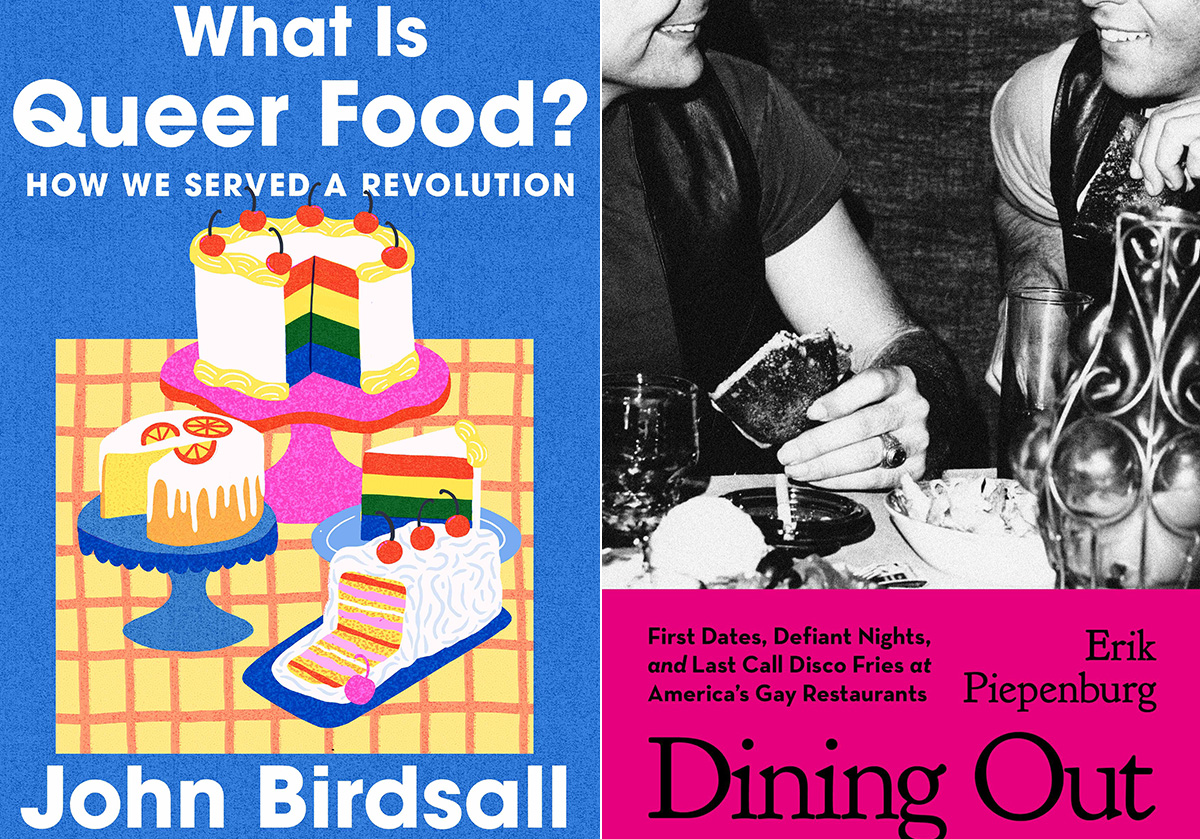
‘What is Queer Food? How We Served a Revolution’
By John Birdsall
c.2025, W.W. Norton
$29.99/304 pages
‘Dining Out: First Dates, Defiant Nights, and Last Call Disco Fries at America’s Gay Restaurants’
By Erik Piepenburg
c.2025, Grand Central
$30/352 pages
You thought a long time about who sits where.
Compatibility is key for a good dinner party, so place cards were the first consideration; you have at least one left-hander on your guest list, and you figured his comfort into your seating chart. You want the conversation to flow, which is music to your ears. And you did a good job but, as you’ll see with these two great books on dining LGBTQ-style, it’s sometimes not who sits where, but whose recipes were used.
When you first pick up “What is Queer Food?” by John Birdsall, you might miss the subtitle: “How We Served a Revolution.” It’s that second part that’s important.

Starting with a basic gay and lesbian history of America, Birdsall shows how influential and (in)famous 20th century queer folk set aside the cruelty and discrimination they received, in order to live their lives. They couldn’t speak about those things, he says, but they “sat down together” and they ate.
That suggested “a queer common purpose,” says Birdsall. “This is how who we are, dahling, This is how we feed our own. This is how we stay alive.”
Readers who love to cook, bake or entertain, collect cookbooks, or use a fork will want this book. Its stories are nicely served, they’re addicting, and they may send you in search of cookbooks you didn’t know existed.
Sometimes, though, you don’t want to be stuck in the kitchen, you want someone else to bring the grub. “Dining Out” by Erik Piepenburg is an often-nostalgic, lively look at LGBTQ-friendly places to grab a meal – both now and in the past.

In his introduction, Piepenburg admits that he’s a journalist, “not a historian or an academic,” which colors this book, but not negatively. Indeed, his journeys to “gay restaurants” – even his generous and wide-ranging definitions of the term – happily influence how he presents his narrative about eateries and other establishments that have fed protesters, nourished budding romances, and offered audacious inclusion.
Here, there are modern tales of drag lunches and lesbian-friendly automats that offered “cheap food” nearly a century ago. You’ll visit nightclubs, hamburger joints, and a bathhouse that feeds customers on holidays. Stepping back, you’ll read about AIDS activism at gay-friendly establishments, and mostly gay neighborhood watering holes. Go underground at a basement bar; keep tripping and meet proprietors, managers, customers and performers. Then take a peek into the future, as Piepenburg sees it.
The locales profiled in “Dining Out” may surprise you because of where they can be found; some of the hot-spots practically beg for a road trip.
After reading this book, you’ll feel welcome at any of them.
If these books don’t shed enough light on queer food, then head to your favorite bookstore or library and ask for help finding more. The booksellers and librarians there will put cookbooks and history books directly in your hands, and they’ll help you find more on the history and culture of the food you eat. Grab them and you’ll agree, they’re pretty tasty reads.
The Blade may receive commissions from qualifying purchases made via this post.

You’re going to be on your feet a lot this month.
Marching in parades, dancing in the streets, standing up for people in your community. But you’re also likely to have some time to rest and reflect – and with these great new books, to read.
First, dip into a biography with “Marsha: The Joy and Defiance of Marsha P. Johnson” by Tourmaline (Tiny Rep Books, $30), a nice look at an icon who, rumor has it, threw the brick that started a revolution. It’s a lively tale about Marsha P. Johnson, her life, her activism before Stonewall and afterward. Reading this interesting and highly researched history is a great way to spend some time during Pride month.
For the reader who can’t live without music, try “The Dad Rock That Made Me a Woman” by Niko Stratis (University of Texas Press, $27.95), the story of being trans, searching for your place in the world, and finding it in a certain comfortable genre of music. Also look for “The Lonely Veteran’s Guide to Companionship” by Bronson Lemer (University of Wisconsin Press, $19.95), a collection of essays that make up a memoir of this and that, of being queer, basic training, teaching overseas, influential books, and life.
If you still have room for one more memoir, try “Walk Like a Girl” by Prabal Gurung (Viking, $32.00). It’s the story of one queer boy’s childhood in India and Nepal, and the intolerance he experienced as a child, which caused him to dream of New York and the life he imagined there. As you can imagine, dreams and reality collided but nonetheless, Gurung stayed, persevered, and eventually became an award-winning fashion designer, highly sought by fashion icons and lovers of haute couture. This is an inspiring tale that you shouldn’t miss.
No Pride celebration is complete without a history book or two.
In “Trans History: From Ancient Times to the Present Day” by Alex L. Combs & Andrew Eakett ($24.99, Candlewick Press), you’ll see that being trans is something that’s as old as humanity. One nice part about this book: it’s in graphic novel form, so it’s lighter to read but still informative. Lastly, try “So Many Stars: An Oral History of Trans, Nonbinary, Genderqueer, and Two-Spirit People of Color” by Caro De Robertis (Algonquin Books of Chapel Hill. $32.00) a collection of thoughts, observations, and truths from over a dozen people who share their stories. As an “oral history,” you’ll be glad to know that each page is full of mini-segments you can dip into anywhere, read from cover to cover, double-back and read again. It’s that kind of book.
And if these six books aren’t enough, if they don’t quite fit what you crave now, be sure to ask your favorite bookseller or librarian for help. There are literally tens of thousands of books that are perfect for Pride month and beyond. They’ll be able to determine what you’re looking for, and they’ll put it directly in your hands. So stand up. March. And then sit and read.
a&e features
James Baldwin bio shows how much of his life is revealed in his work
‘A Love Story’ is first major book on acclaimed author’s life in 30 years
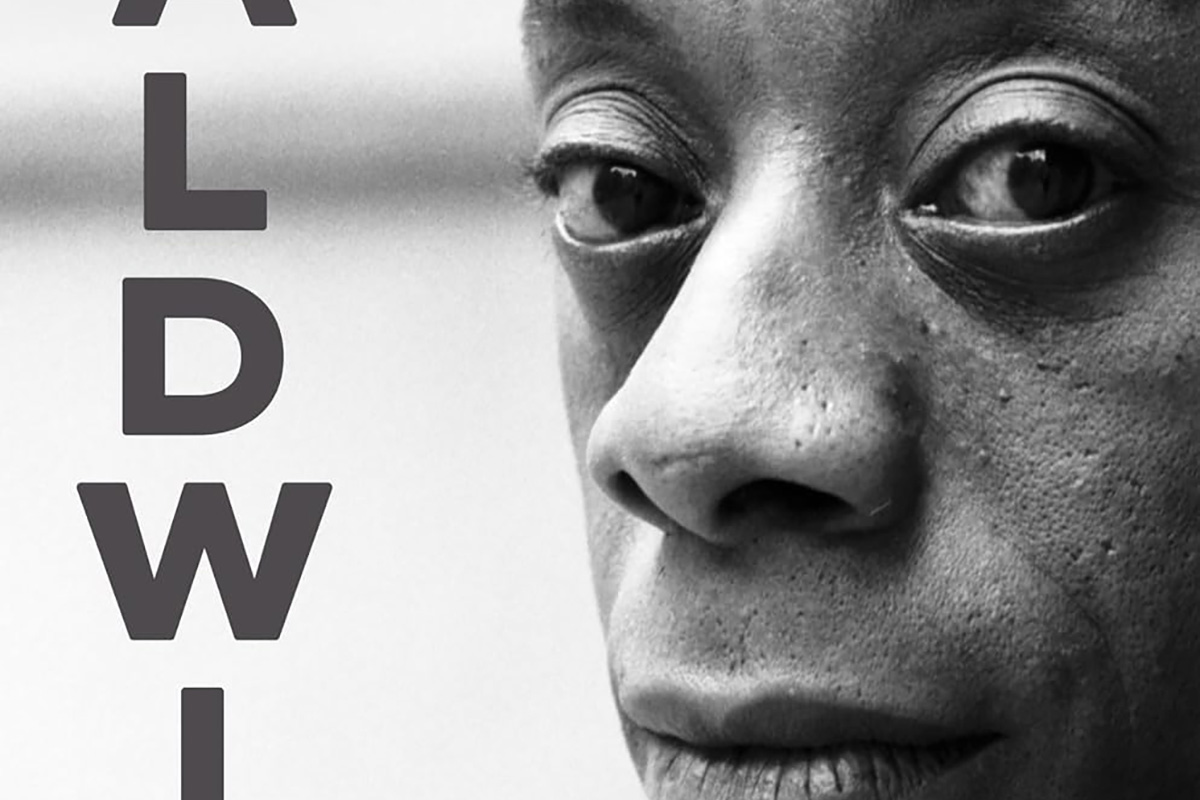
‘Baldwin: A Love Story’
By Nicholas Boggs
c.2025, FSG
$35/704 pages
“Baldwin: A Love Story” is a sympathetic biography, the first major one in 30 years, of acclaimed Black gay writer James Baldwin. Drawing on Baldwin’s fiction, essays, and letters, Nicolas Boggs, a white writer who rediscovered and co-edited a new edition of a long-lost Baldwin book, explores Baldwin’s life and work through focusing on his lovers, mentors, and inspirations.
The book begins with a quick look at Baldwin’s childhood in Harlem, and his difficult relationship with his religious, angry stepfather. Baldwin’s experience with Orilla Miller, a white teacher who encouraged the boy’s writing and took him to plays and movies, even against his father’s wishes, helped shape his life and tempered his feelings toward white people. When Baldwin later joined a church and became a child preacher, though, he felt conflicted between academic success and religious demands, even denouncing Miller at one point. In a fascinating late essay, Baldwin also described his teenage sexual relationship with a mobster, who showed him off in public.
Baldwin’s romantic life was complicated, as he preferred men who were not outwardly gay. Indeed, many would marry women and have children while also involved with Baldwin. Still, they would often remain friends and enabled Baldwin’s work. Lucien Happersberger, who met Baldwin while both were living in Paris, sent him to a Swiss village, where he wrote his first novel, “Go Tell It on the Mountain,” as well as an essay, “Stranger in the Village,” about the oddness of being the first Black person many villagers had ever seen. Baldwin met Turkish actor Engin Cezzar in New York at the Actors’ Studio; Baldwin later spent time in Istanbul with Cezzar and his wife, finishing “Another Country” and directing a controversial play about Turkish prisoners that depicted sexuality and gender.
Baldwin collaborated with French artist Yoran Cazac on a children’s book, which later vanished. Boggs writes of his excitement about coming across this book while a student at Yale and how he later interviewed Cazac and his wife while also republishing the book. Baldwin also had many tumultuous sexual relationships with young men whom he tried to mentor and shape, most of which led to drama and despair.
The book carefully examines Baldwin’s development as a writer. “Go Tell It on the Mountain” draws heavily on his early life, giving subtle signs of the main character John’s sexuality, while “Giovanni’s Room” bravely and openly shows a homosexual relationship, highly controversial at the time. “If Beale Street Could Talk” features a woman as its main character and narrator, the first time Baldwin wrote fully through a woman’s perspective. His essays feel deeply personal, even if they do not reveal everything; Lucian is the unnamed visiting friend in one who the police briefly detained along with Baldwin. He found New York too distracting to write, spending his time there with friends and family or on business. He was close friends with modernist painter Beauford Delaney, also gay, who helped Baldwin see that a Black man could thrive as an artist. Delaney would later move to France, staying near Baldwin’s home.
An epilogue has Boggs writing about encountering Baldwin’s work as one of the few white students in a majority-Black school. It helpfully reminds us that Baldwin connects to all who feel different, no matter their race, sexuality, gender, or class. A well-written, easy-flowing biography, with many excerpts from Baldwin’s writing, it shows how much of his life is revealed in his work. Let’s hope it encourages reading the work, either again or for the first time.
-

 U.S. Supreme Court1 day ago
U.S. Supreme Court1 day agoSupreme Court to consider bans on trans athletes in school sports
-
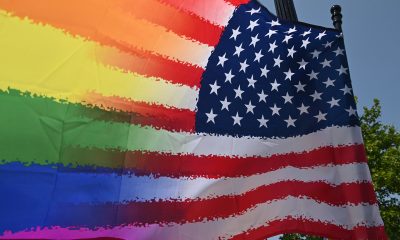
 Out & About1 day ago
Out & About1 day agoCelebrate the Fourth of July the gay way!
-

 Maryland4 days ago
Maryland4 days agoSilver Spring holds annual Pride In The Plaza
-

 Opinions4 days ago
Opinions4 days agoSupreme Court decision on opt outs for LGBTQ books in classrooms will likely accelerate censorship

